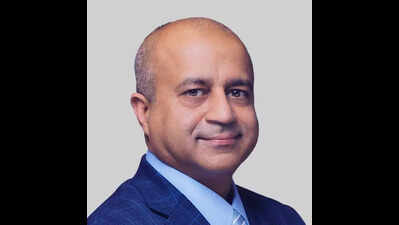Persistent Q1 revenue up 19% YoY, reaffirms $2bn aspiration by FY27 | Bengaluru News

Bengaluru: Persistent Systems reported a 3.3% sequential revenue rise for the June quarter and a 19% year-on-year increase in constant currency terms.Growth was led by BFSI, which rose 9% sequentially, and software, hi-tech & emerging industries at 3.6%, while healthcare and lifesciences declined 1.9%. Geographically, North America grew 3%, Europe 11.3%, and India 9.4%; however, Rest of the World (RoW) dropped 19.2%. Total contract value (TCV) stood at $520 million, with new bookings of $337 million.CEO Sandeep Kalra expressed confidence in reaching the aspirational $2 billion revenue goal by FY27. “To reach that, we need a 19–20% CAGR annually. We’re already tracking at that pace. So far, our growth has been largely organic. Even the 18.8% we reported includes very little inorganic contribution. Over the next two years, if we add a few small acquisitions—or a larger one—it will support that trajectory. The $2 billion aspiration remains intact. Whether we hit it a quarter early or late, we’re committed,” he said.Kalra said that while the macroeconomic environment remains soft, improvements are expected over the next 1–3 quarters. “With developments like the tariff discussions and legislative clarity in the US, along with stabilizing inflation and potential rate cuts, we anticipate a more favourable environment,” he added.EBIT margins contracted by 10bps sequentially to 15.5%, slightly below expectations of 15.6%, impacted by slower ramp-ups, onsite resource retention during offshore transitions, and currency movements. These were partially offset by a 230bps benefit from lower ESOP costs.CFO Vinit Teredesai said ESOP costs follow the Black-Scholes model, with around 60% expensed in the first year, 25% in the second, and the rest thereafter. “Most of the ESOP grants from last year were already accounted for in FY25. That’s why ESOP expenses were higher then. As we moved into FY26, the cost naturally reduced, helping our margins. Any new grants or senior-level hires will have some incremental impact, but nothing significant at this point,” he said. On the rising GCC (global capability centre) playbook in IT, Kalra said, “Our aim is to coexist with GCCs. In many of our large programmes, we work alongside global counterparts and the GCCs. We’re not setting up infrastructure or admin teams for clients, but where customers want us to scale within their GCCs, we absolutely do that—particularly in tech-focused areas.”





